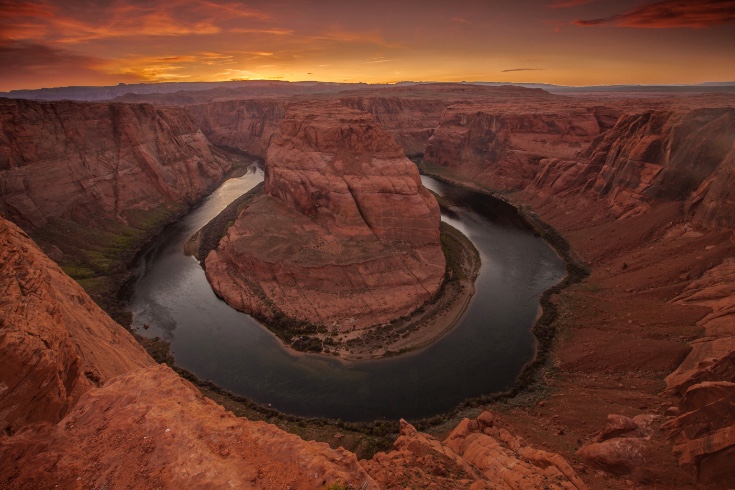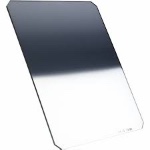
Just a few miles outside of Page, Arizona, the Colorado River takes a large curve before heading south and west toward the Grand Canyon proper. A short hike from the parking lot on Hwy 89 takes you to the edge of a 1,000 foot cliff overlooking Horseshoe Bend, one of the most iconic views of the American Southwest.
Trying to take a good photograph of it is difficult. Hundreds of tourists walk away every day with images that look nothing like they remember the view to be. So let's look at what they are doing wrong.
The human eye has a remarkable ability to adjust to varying light conditions as our pupils expand and contract. At sunset, Horseshoe Bend is in dark shadow and the sky is very bright. When we look down our eyes quickly adjust and we can see lots of details in the rocks and water. Likewise, when we look up at the sky the same thing occurs and we can quickly pick up the details in the clouds.
A camera does not have this same ability to handle extremes in lighting, so one of two things happens when we try to take a typical shot of this scene - either the sky comes out looking good but the canyon is too dark, or the canyon is exposed properly and the nice details of the orange clouds get washed out. If you have ever taken a picture of someone standing indoors in front of a bright window the same thing happens, unless you use a flash.
There are a couple of ways to work around this issue.
Graduated Filters - For just a few dollars you can purchase a graduated filter which is a simple way to correct these types of extreme lighting issues.

This filter has a clear portion and a darkened area and you simply position the dark area so it lines up with the horizon, darkening the bright sky and compressing the range of light to a level the camera can work with. The evening I shot this picture of Horseshoe Bend the lighting range was so extreme I had to stack two of these filters together to get the exposure just right. Graduated filters don't work in all circumstances since you have to have a straight horizon for them to produce the right effect. But they are great for things like sunset pictures when you are at the beach.
Image Blending (HDR) - Most high end cameras have a bracketing function which allows a series of three photos to be taken in quick succession. There is a standard exposure, an overexposed one and an underexposed one. You can then use various software programs like Photomatix to blend the best attributes of the three images, resulting in a picture in which both the highlights and shadows look good. If you have an iPhone 6 you may have noticed a HDR setting on your camera app. It uses this exact process without the need for editing photos after the fact and it works pretty decently. HDR is a good alternative to graduated filters in situations where there is not a clear horizon line, for example, images of cityscapes or mountain ranges.
Next time you find yourself wanting to take a picture with an extreme range of light try one of these techniques, or just put away your camera and use your iPhone.